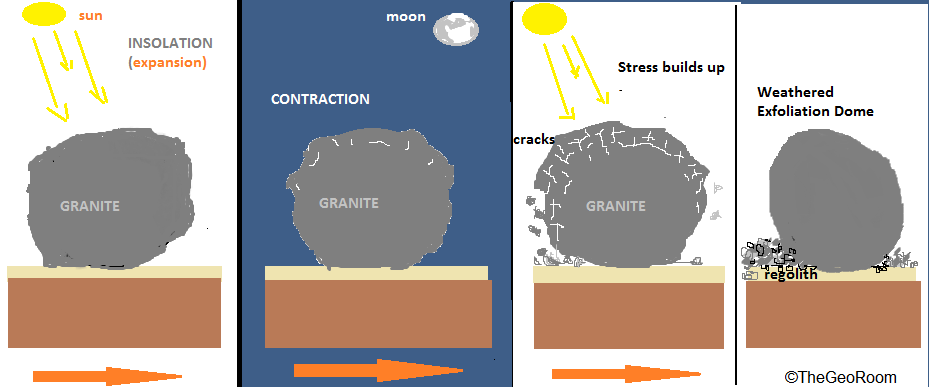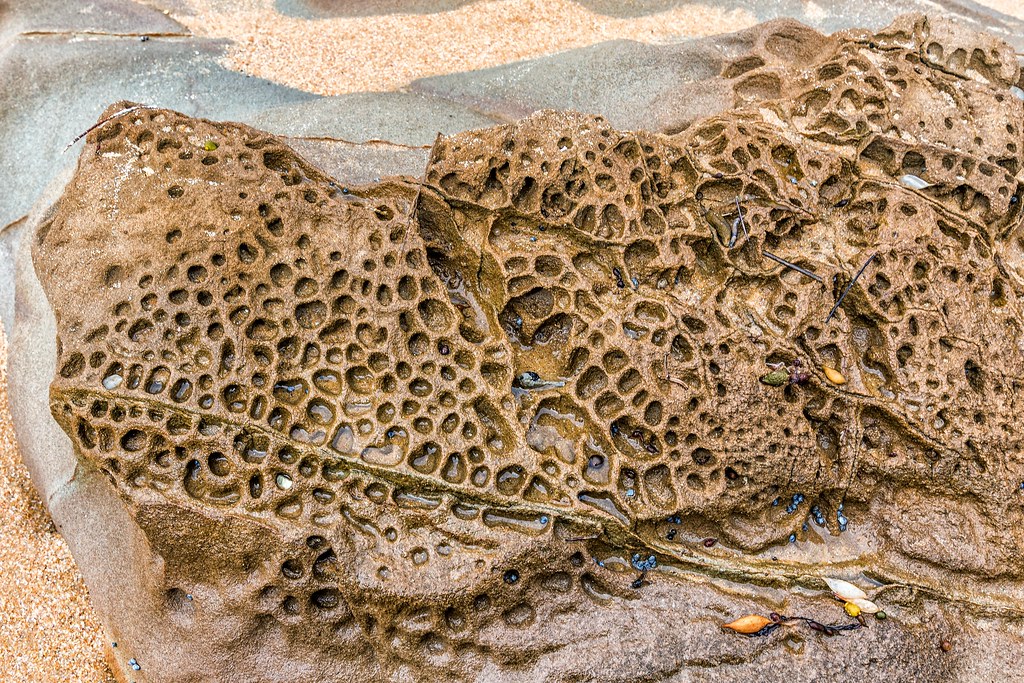What is Weathering?
Weathering is the breaking down of rocks, soil, and minerals as well as wood and artificial materials through contact with the Earth's atmosphere, water, and biological organisms. Weathering occurs on-site, that is, in the same place, with little or no movement, and thus should not be confused with erosion, which involves the movement of rocks and minerals by agents such as water, ice, snow, wind, waves and gravity and then being transported and deposited in other locations.

What is Honeycomb Weathering?
Honeycomb weathering is a form of cavernous weathering. It consists of regular, tightly adjoining, and commonly patterned cavities that are developed in weathered bedrock; are less than 2 cm (0.79 in) in size. Honeycomb weathering typically develops in siliceous rocks. It can be found in all climate types but is most prolific in salt-rich environments, such as deserts and coastal zones. The common factors in the environments in which it is found are high salt concentrations and frequent or occasional desiccating conditions. Many explanations have been proposed for honeycomb and other cavernous weathering. These explanations include marine abrasion; wind corrosion; mechanical weathering resulting from short-term temperature variations; chemical weathering of the interior of the rock (core-softening) under a protective crust (case-hardening) followed by the mechanical removal of the softened material; biogeochemical weathering by lichens; temperature variations acting on salt efflorescence in coastal regions; and salt weathering. Most commonly, researchers have advocated salt weathering as the primary explanation for the formation of honeycomb weathering. Currently, it is considered to be polygenetic in origin; being the result of the complex interaction of physical and chemical weathering processes, which include salt weathering.

Reminder Visiting the Memorial:
Please stay on the paved paths at all times and do not approach the memorial directly.
Logging Tasks:
-
At the GZ, look for some examples of honeycomb weathering in the rock. Estimate the size of the eroded portions in the rock (they should look like little divots).
-
How far above the ground are these honeycombed portions of rock? Are they found throughout a certain horizontal layer of rock? If so, what is the color of this layer?
-
As of June 2019, earthcaches are now allowed to have a required photo logging task. Please provide a photo of yourself, your GPSr, or a personal item that proves that you have visited this site. Please post this in your log.
**To log this earthcache, please send your answers to the cache owner**
Sources:
- https://www.thegeoroom.co.zw/geomorphology/physical-weathering.php
- https://pubs.geoscienceworld.org/gsa/gsabulletin/article-abstract/111/8/1250/183535/Origins-of-honeycomb-weathering-The-role-of-salts?redirectedFrom=fulltext
- https://en.wikipedia.org/wiki/Honeycomb_weathering
Enjoyed finding this EarthCache? Consider awarding it a favorite point!
| We have earned GSA's highest level: |
 |

